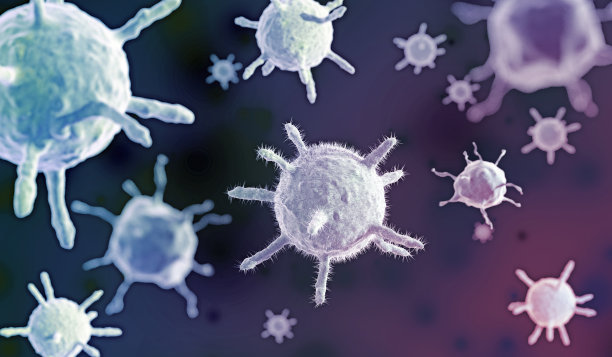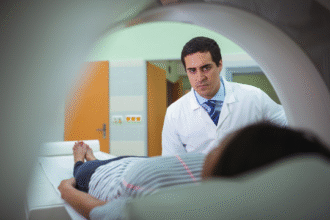Viral Infections: What They Are, How They’re Treated, and How to Prevent Them
Viral infection begins when a virus enters the body, binds to susceptible host cells, and uses the cell’s machinery to replicate. Disease results when viral replication and the immune response damage tissues or disrupt normal function.
Clinical Patterns of Viral Infection
- Overt (symptomatic) vs. inapparent/asymptomatic infection
- Acute: short incubation, rapid onset, illness resolves in days to weeks (e.g., influenza). Immunity often develops.
- Persistent: virus remains for months to years. Patterns include:
- Chronic productive infection (e.g., hepatitis B)
- Latent infection with reactivation (e.g., HSV, VZV)
- Slowly progressive infection (e.g., HIV without treatment)
How Viruses Spread
- Respiratory droplets/aerosols (e.g., influenza, SARS‑CoV‑2)
- Fecal–oral (e.g., norovirus, poliovirus)
- Blood/sex/perinatal (e.g., HBV, HCV, HIV)
- Vector‑borne (e.g., dengue, Zika)
- Direct contact with lesions or secretions (e.g., HSV, VZV)
Symptoms and Diagnosis
Symptoms vary by organ system (respiratory, GI, liver, nervous system) and by host factors. Common systemic features include fever, fatigue, myalgias, and headache.
Diagnosis may involve:
– NAAT/PCR or antigen tests on respiratory, blood, or other specimens
– Serology for immunity or past infection; viral load for chronic infections (HBV, HIV)
– Routine labs (CBC, liver enzymes) and imaging as indicated
Treatment Principles (General)
- Start targeted antivirals promptly when indicated—timing matters (e.g., influenza within 48 hours; treat severe/hospitalized even if later).
- Provide supportive care: hydration, antipyretics/analgesics, oxygen if needed.
- Avoid antibiotics unless bacterial infection is suspected or confirmed.
- Manage risk: consider post‑exposure prophylaxis (PEP) when appropriate; adjust immunosuppression under specialist guidance.
Condition‑Specific Antiviral Therapy (Examples)
Influenza
- First‑line: neuraminidase inhibitors (oseltamivir; inhaled zanamivir—avoid in severe airway disease). Single‑dose baloxavir is an alternative in select patients.
- Treat high‑risk, severe, or hospitalized patients as soon as possible (benefit even >48 hours after onset). Consider chemoprophylaxis for exposed high‑risk contacts per guidelines.
Herpesviruses
- HSV‑1/2: acyclovir, valacyclovir, or famciclovir; IV acyclovir for severe disease (e.g., encephalitis, neonatal HSV).
- VZV (shingles): acyclovir or valacyclovir within 72 hours of rash onset to reduce complications; recombinant zoster vaccine prevents shingles and post‑herpetic neuralgia in eligible adults.
- CMV (immunocompromised): valganciclovir/ganciclovir; foscarnet/cidofovir for resistance or intolerance.
Viral Hepatitis
- Hepatitis B (HBV): long‑term suppression with potent nucleos(t)ide analogs (tenofovir DF/AF, entecavir); pegylated interferon for selected cases. Monitor ALT, HBV DNA, and HBeAg status.
- Hepatitis C (HCV): curative direct‑acting antiviral combinations (e.g., sofosbuvir/velpatasvir or glecaprevir/pibrentasvir) for 8–12 weeks in most adults; >95% cure rates.
HIV Infection
- Initiate antiretroviral therapy (ART) as early as possible. Preferred regimens are integrase inhibitor‑based (e.g., bictegravir/TAF/FTC or dolutegravir + TDF/TAF + FTC/3TC).
- Goals: durable viral suppression (undetectable = untransmittable, U=U), immune recovery, and prevention of morbidity.
- Prevention: pre‑exposure prophylaxis (PrEP) and post‑exposure prophylaxis (PEP within 72 hours) for eligible individuals.
Prevention: What Works
- Vaccination: influenza, COVID‑19, HBV, HPV, MMR, varicella, zoster, and others per age/risk and local guidance.
- Hygiene and respiratory etiquette: hand hygiene, stay home when sick, masks/ventilation in high‑risk settings.
- Safe practices: safer sex (condoms), never share needles, use sterile equipment; screen blood products.
- Post‑exposure measures: HIV PEP within 72 hours; HBV vaccine ± HBIG after certain exposures; rabies PEP after high‑risk animal bites.
When to Seek Medical Care
- Trouble breathing, chest pain, persistent high fever, confusion, severe dehydration
- New jaundice, dark urine, or right‑upper‑quadrant pain (possible hepatitis)
- Severe headache, stiff neck, seizures, or focal neurologic signs
- Immunocompromised state with new fever or rapidly worsening symptoms
This article is for general education and does not replace professional medical advice. Follow local public health and clinical guidance for testing, treatment, vaccination, and post‑exposure care.







